Animals living in sand dunes always fascinated me. Extreme conditions like heat or dryness pose quite a challenge for animals living in the desert. But, sandy terrain that requires a great effort while taking each step is another problem; particularly to all animals that the sand dunes are their habitat. And Indeed many animals living in sandy terrain have special ways to overcome this.
The Egyptian Predator Beetle
Firstly, the Egyptian predator beetle is very common to be found in the Negev dunes. These beetles have an unusual life cycle; young larvae enter ants’ nests and remain there, feeding on the ants and their larvae. They soon assume the scent of their ant hosts and are accepted as colony members.
Syrian Brown Bear
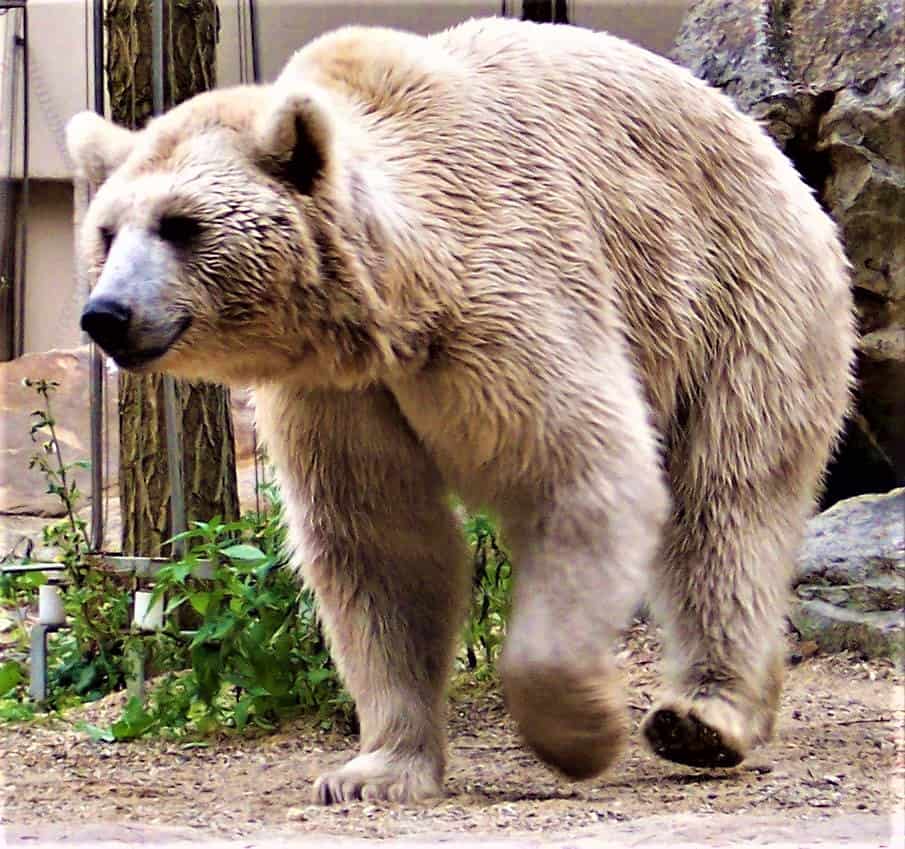
(Credit: Stahlkocher CC BY-SA 3.0)
They move about with their bodies lifted high up off the ground to avoid the heat of the substrate. Their mandibles, although large, are not strong enough for defense. Instead, they squirt an acrid fluid from the anus to disable their enemies. This defense strategy has earned them the popular name of ‘oogpister’ i.e. ‘eye-squirter’ (in French). Their large eyes, mandibles, and speed of movement are similar to those of tiger beetles, but these beetles are flightless.
Animals Living in Sand Dunes: Egyptian Sand Gecko
Unlike other geckos, dune geckos can not climb up smooth surfaces. Instead, they prefer to dig. During the day, they usually hide in burrows or caves, though often they are out and about during the day. They sometimes appear slow, but they can be speedy. Camouflage in the sand helps them remain inconspicuous, especially when hunting. They eat mainly crickets and mealworms. To move easily in the sand, their fingers are relatively big. An even better example of a lizard with a bigger foot would be Nidua fringe-fingered lizard.
The Negev: The Little Sahara Desert
If one desires to get to know the fauna in the dunes, he should travel to the Western Negev because those are the vastest dunes in Israel and the most preserved. We’ll focus on animals found only here from the entire land.
Firstly, the Negev Tortoise is endemic to the Negev area. Besides the fact that they are most active during the winter, we know little about them. We know they are territorial, and the Negev Tortoise is mostly active during the fall, winter, and spring. Contrary to most reptiles in the summer, he is a sleep-in burrow, usually one abandoned by rodents. The reason for that is the drying up of the Annual flowers in Israel during the summer; due to its climate form more than 50% of the entire Flora of Israel.
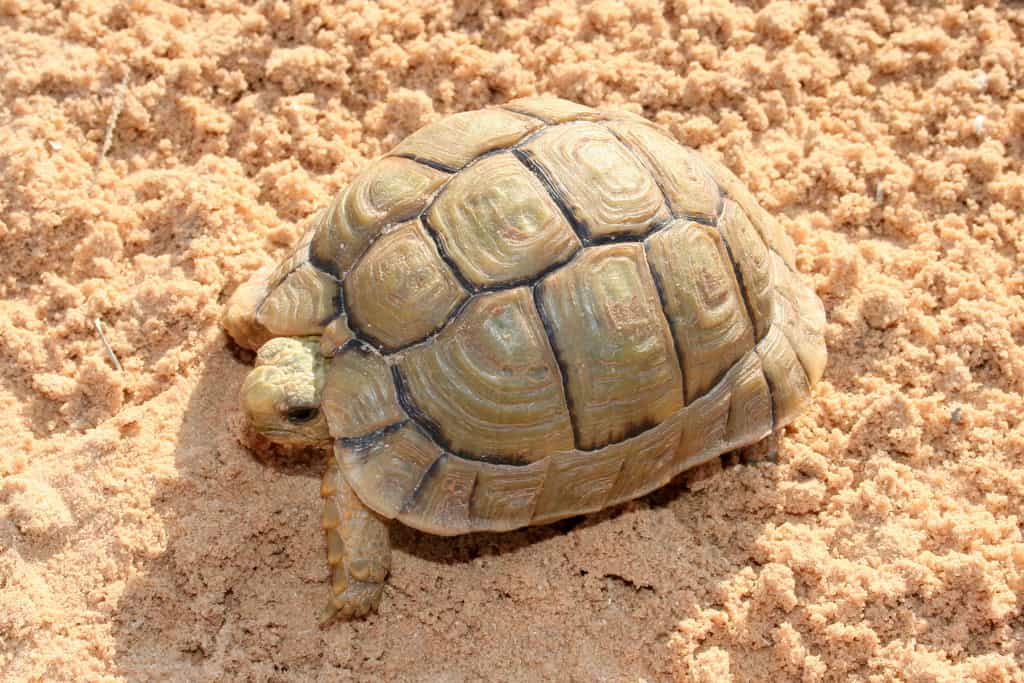
(Credit: Abrahami CC-BY-SA 2.5)
Animals Living in Sand Dunes: Savigny’s Agama
Another reptile that is active during the day is Savigny’s Agama. The peculiar name was given to him in honor of a French zoologist, Marie Jules César Lelorgne de Savigny. In 1798 he traveled to Egypt with Emperor Napoleon as part of the French scientific expedition. He contributed to the publication of the expedition’s findings in 1809 (Description de l’Egypte). He wrote about the fauna in the Mediterranean Sea and the Red Sea.
Savigny’s agama climbs shrubs and bushes on hot days and distances his body from the hot ground. He hardly ever drinks, and most of the water he’s getting from his food is like plants and insects, even small lizards. Reaching a total of 25 cm while his tail is about the same length. When he walks, he leaves marks on the ground, including his tail, but when he runs, he lifts the tail that does not show on the sand.
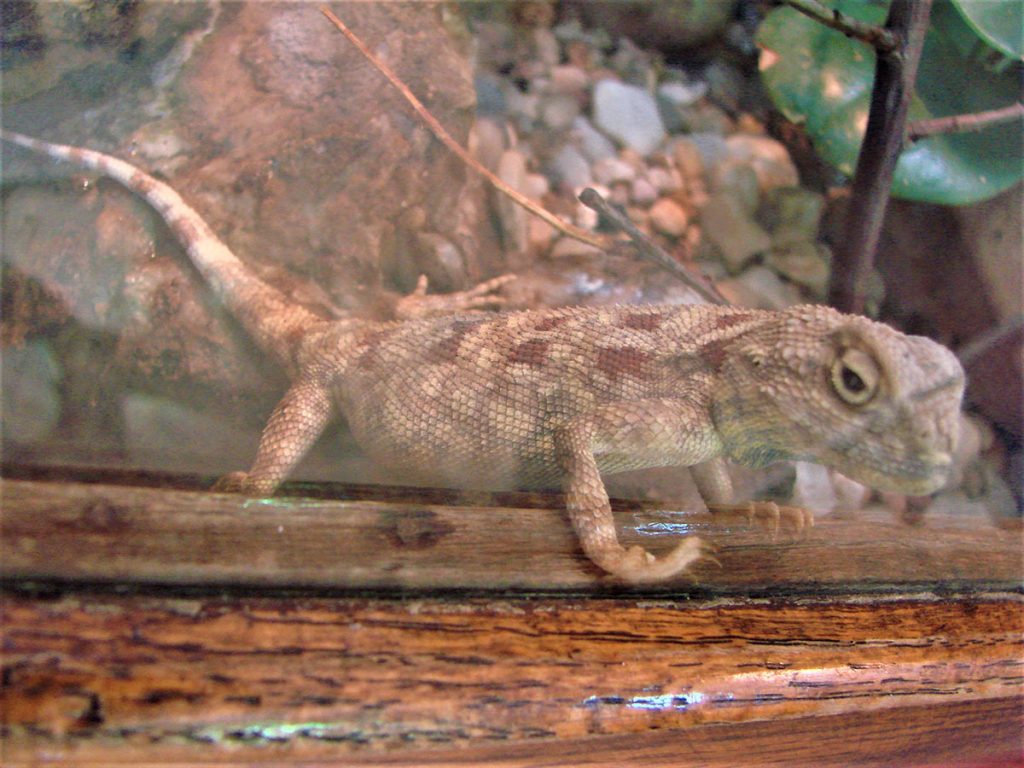
(Credit: Guérin Nicolas – CC-BY-SA 3.0)
The Sand Fish (Scincus Scincus)
My favorite creature that populates the dunes in the Western Negev. This peculiar name is due to his ability to move in the sand as if he were swimming in it. Adults usually reach 20 cm in length, including the short tail. The common skink has developed a peculiar way of dealing with the desert heat: it can dive into the soft sand. It does this to prevent overheating (as it is cold-blooded) and whenever it feels threatened, especially by its arch-nemesis: the devil-headed Saharan snake.
The Deadliest Snakes in Israel
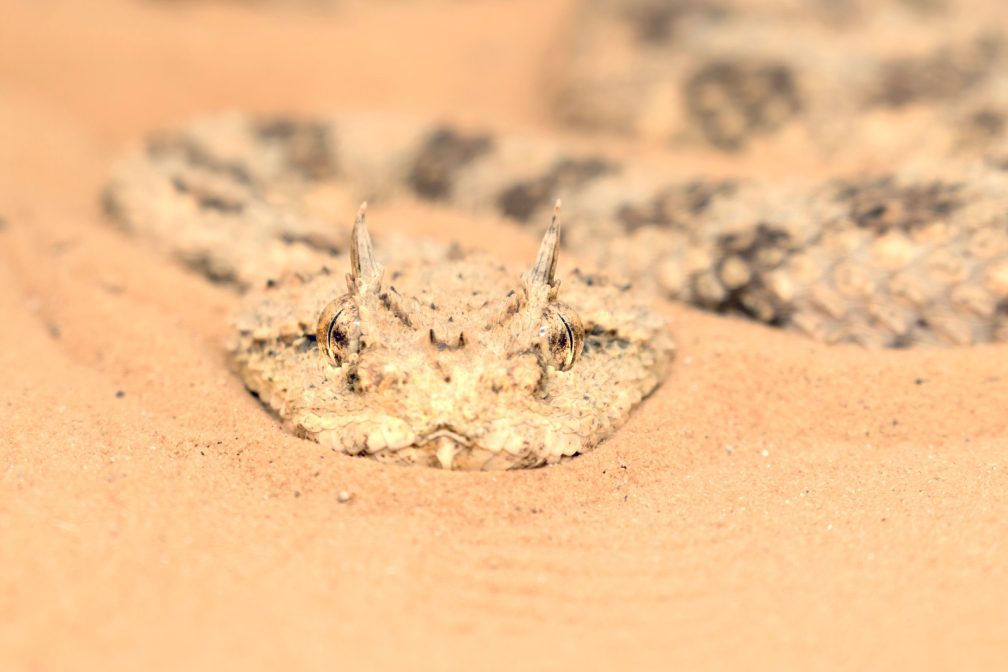
This skink has a long, wedge-shaped snout with a countersunk lower jaw shaped like a basket. Its long, tapered compact body is covered with smooth, shiny scales that may appear only to the untrained eye, and its legs are short and sturdy with long, flattened, and fringed shovel-like feet. The tail is short, tapering to a fine point. The coloration of this species is considered attractive, being yellow caramel with brown-black cross bands. This lizard also has bead-like eyes, so it can close them to keep sand out of its eyes. Similarly, its nostrils are tiny to keep the sand out of its nose and lungs.
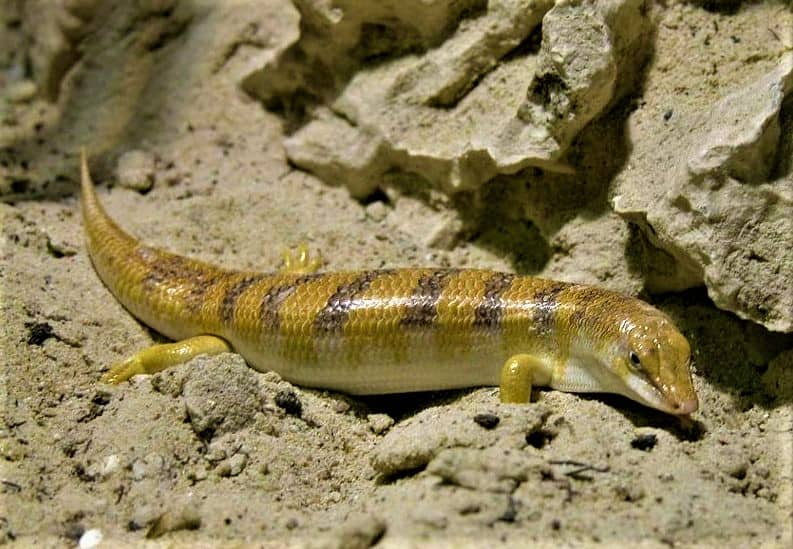
(Credit: Wilfried Berns CC BY-SA 2.0)
Animals Living in Sand Dunes: The Devil-Headed Saharan Snake
This genus is nocturnal and terrestrial (not known to climb into bushes), often hiding by burying themselves in the sand. Although often described as slow-moving, these snakes are also capable of sidewinding. When doing so, they can move quickly across the sand.
Cerastes species are not known to be particularly ill-tempered (“fairly placid”). Still, when threatened, they will often stand their ground and form C-shaped coils that are rubbed together to produce a rasping or crackling sound, similar to Echis. This is called stridulation. With enough provocation, they will strike from this position.
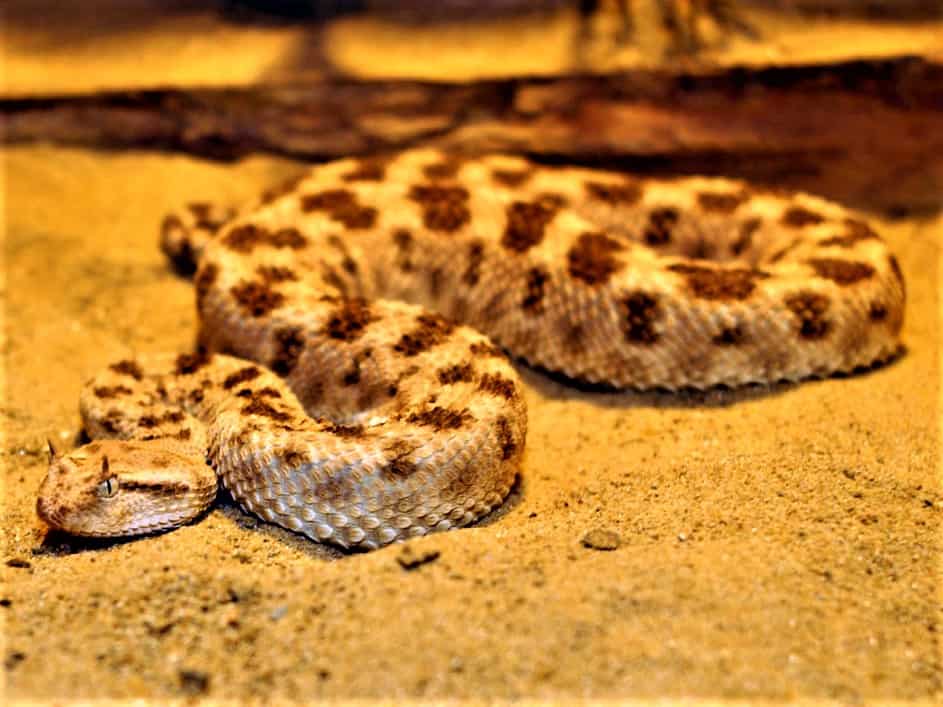
These snakes can “sink” quickly into loose sand, using their keeled, angled, and serrated lateral scales in a rocking motion. This process begins at the tail and moves forward until the entire head is buried and only the eyes and nostrils are exposed. They can bury themselves this way in an outstretched or coiled position.
Animals Living in Sand Dunes: Sociable lapwing
Bird lovers from all over the world will dedicate day after day in search of this rare bird. I mean no other than the Sociable Lapwing, a critically endangered wader in the lapwing family of birds. This species breeds on open grassland in Russia and Kazakhstan. Three to four eggs are laid in a ground nest.
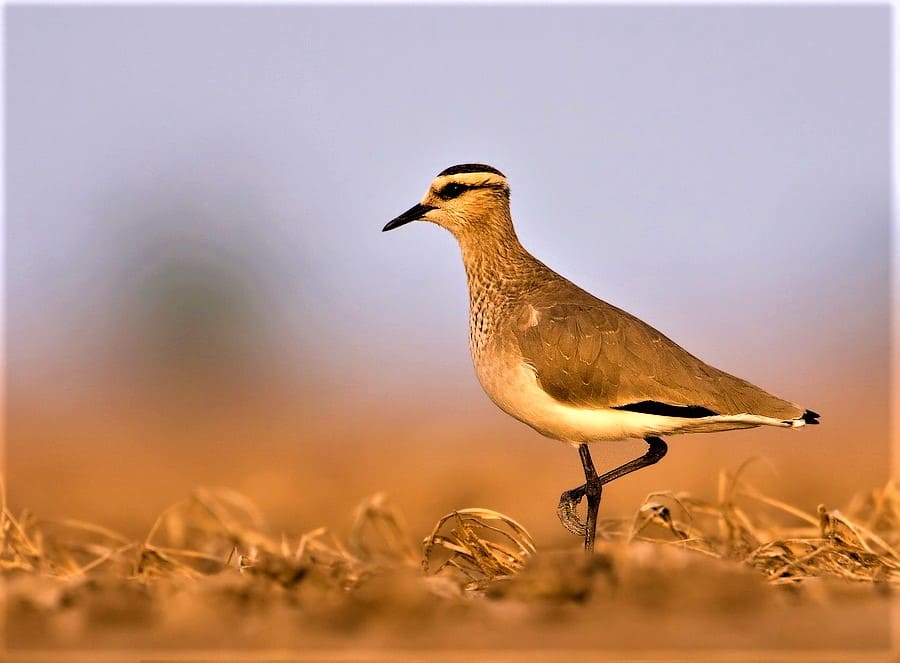
(Credit: Cks3976 CC BY SA 3.0)
Then these birds migrate south through Kyrgyzstan, Tajikistan, Uzbekistan, Turkmenistan, Afghanistan, Armenia, Iran, Iraq, Saudi Arabia, Syria, and Turkey, to key wintering sites in Israel, Syria, Eritrea, Sudan, and north-west India. It is a rare vagrant in western and northern Europe, where this gregarious bird is usually found with northern lapwings. It feeds similarly, picking insects and other small prey. Traditionally, a flock spends the winter in the open fields of the famous powerline south of Urim in northwestern Negev.







